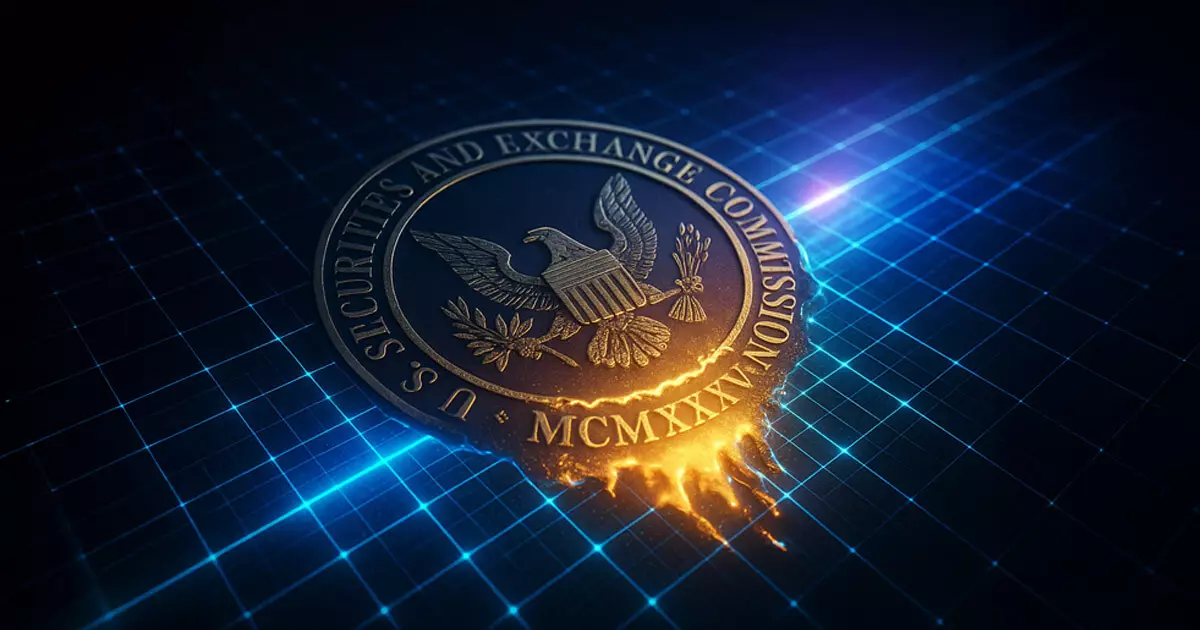The recent announcement by the US Securities and Exchange Commission (SEC) to abandon 14 regulatory proposals, including critical measures targeting the cryptocurrency industry, raises serious concerns for the future of financial innovation in America. This retreat, which became public knowledge on June 12, highlights an alarming trend: as the SEC shifts away from a robust regulatory framework established under former Chair Gary Gensler, it risks leaving the burgeoning crypto sector vulnerable to global competitors. Stripped of the oversight that should govern it, the United States’ position as a leader in the digital asset arena hangs in the balance.
A Retreat from Responsibility
Initially, the proposals were devised to regulate emerging financial technologies comprehensively, aiming to protect investors and ensure market integrity. The rescinded rules, which were part of a broader initiative to bring cryptocurrency trading and management under SEC’s tight grip, included a controversial move to redefine securities exchanges broad enough to encompass decentralized finance (DeFi) platforms. This classification would have fundamentally altered the operational landscape for numerous blockchain applications, effectively opening them up to intricate and possibly burdensome regulatory scrutiny.
Additionally, the now-scrapped Custody Rule necessitated that all digital assets be managed by qualified custodians, a regulation that would have obstructed investment advisers from utilizing many currently operational crypto custodians. The harsh criteria would have favored banks and broker-dealers, sidelining smaller but innovative firms that have been key players in the sector’s development. The shift toward leniency raises questions about whether the SEC will stand by its mandate to protect investors or simply bow to industry pressures.
Innovation vs. Stagnation
Critics of the SEC’s previous rulemaking agenda argued that these proposed regulations could have stifled innovation and compelled crypto businesses to relocate offshore—an outcome that benefits no one except international competitors who are willing to offer a freer operating environment. The implications are clear: without a balanced regulatory framework, the SEC may inadvertently create a vacuum that allows other nations to thrive in technologies that could redefine finance.
It is noteworthy that this abandonment of critical measures aligns with former President Donald Trump’s broader deregulatory push. However, while the intention may be to alleviate some compliance burdens, we must remain vigilant about the risk of encouraging speculative practices and enabling less scrupulous actors in the process.
Looking Ahead: A Call for Balanced Regulation
The new SEC Chair, Paul Atkins, has signaled a willingness to embrace a more lenient approach toward crypto regulation, which might indeed lead to increased acceptance of digital assets. While fostering innovation is essential, it should never come at the expense of oversight that protects market participants. The balance must be achieved not only to safeguard investors but also to position the United States as a frontrunner in the global digital economy.
Regulatory measures should not be equated to hindrance but viewed as necessary guidance that promotes responsible innovation. If the SEC fails to recognize the delicate interplay between regulation and the growth of new financial instruments, the loss will not only be felt by U.S. investors but will echo through the corridors of financial power, diminishing America’s role on the world stage in this pivotal era of currency transformation.















